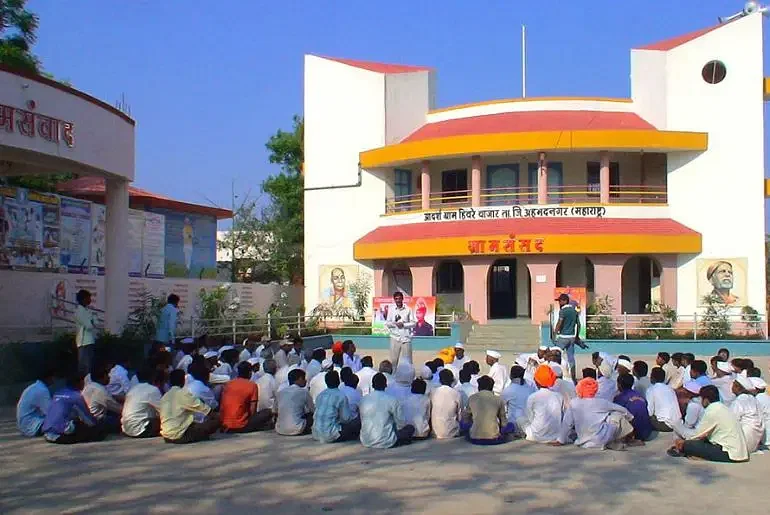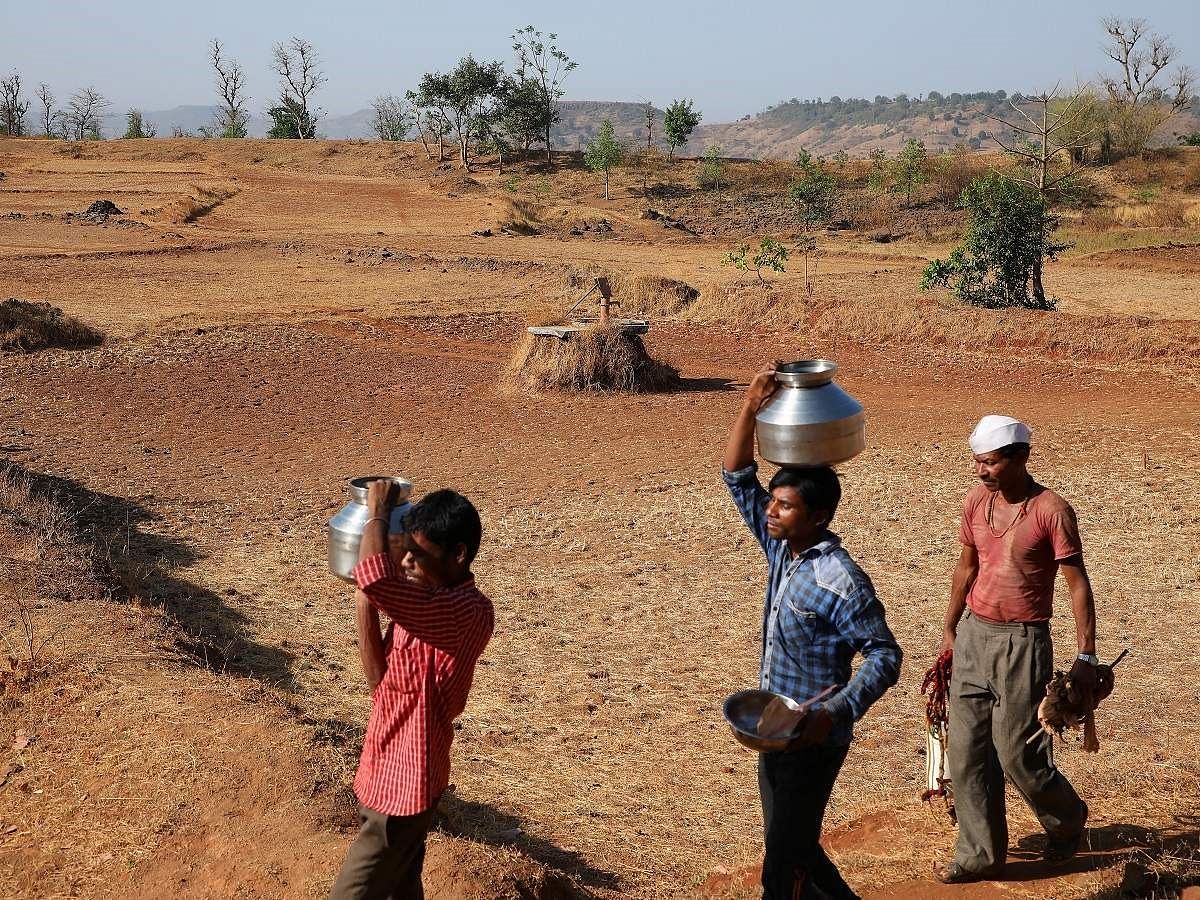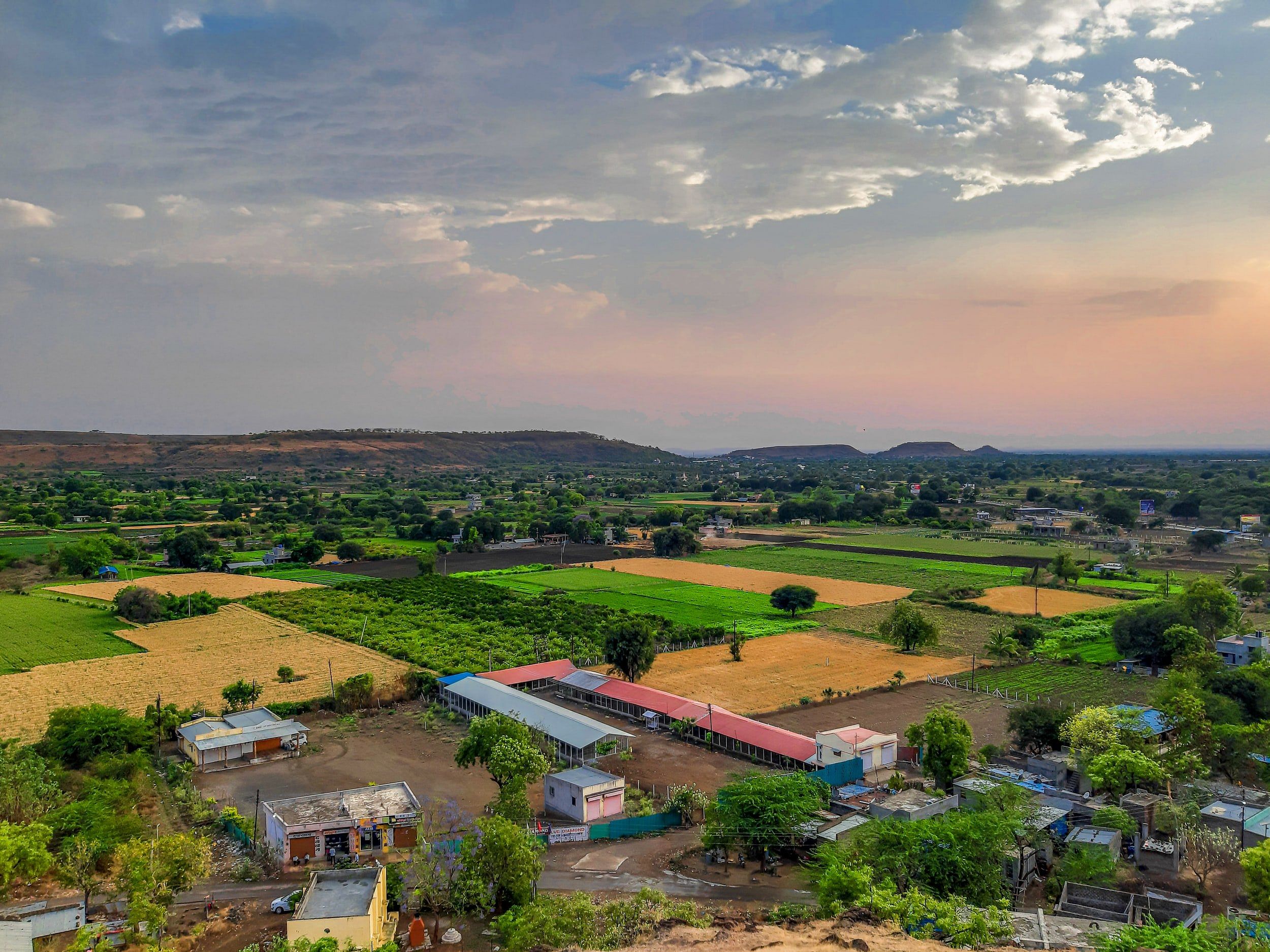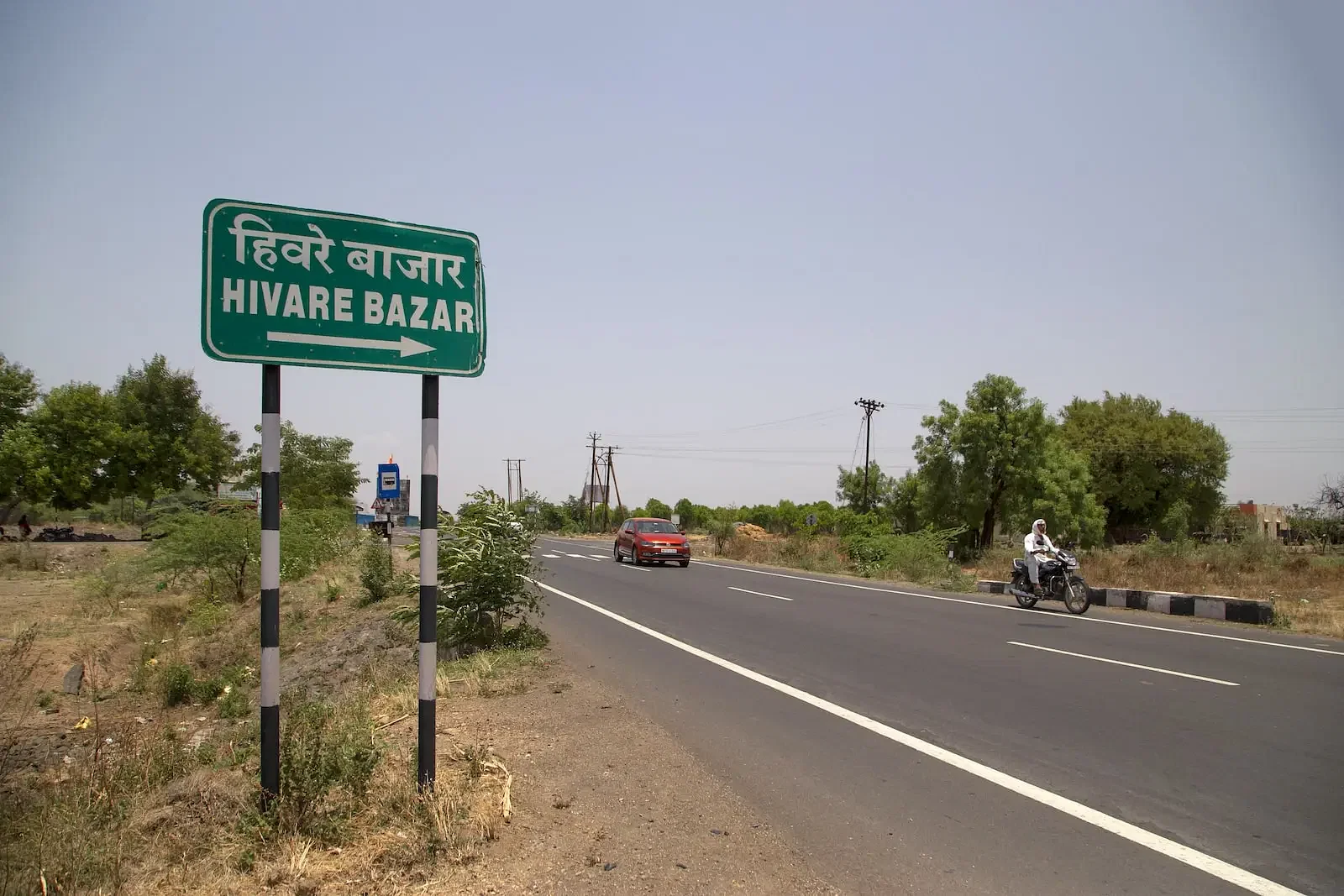I was scrolling through YouTube Shorts, randomly enjoying GRWM videos and those weird trends nobody asked for. Then, out of nowhere, a Dhruv Rathee Shorts video popped up—"The Indian Village of Millionaires." My curiosity kicked in. A village full of millionaires? In India? Sounds like a movie plot! And just like that, Dhruv did what he does best—dropped knowledge I had no clue about.
Enter Hiware Bazar Maharashtra!
If villages had glow-ups, Hiware Bazar would be the ultimate before-and-after story! Once upon a time, this village was so dry that water was scarce, jobs were nearly nonexistent, and hope was fading fast. Families were packing up, ready to leave—because who would want to stay in a place that felt more like a ghost town than a home?
But then, something changed. A twist no one saw coming. Instead of accepting their fate, a few determined villagers rolled up their sleeves and decided to fight back. No magic wands, no shortcuts—just pure common sense and a whole lot of effort.
And rise it did! Today, Hiware Bazar isn’t just green—it’s rich. In fact, around 60 villagers are millionaires! So, how did a nearly abandoned village turn into a blueprint for success that even cities could learn from?
Let’s dive into the inspiring journey of Hiware Bazar Maharashtra—The Indian Village of Millionaires!
Suggested Read: Top Places To Visit In Maharashtra
The Dark Days: History and Challenges of Hiware Bazar
Hiware Bazar, a village in the Ahmednagar district of Maharashtra, was once on the verge of collapse. Life here was tough—so tough that even nature seemed to have given up. Water was scarce, farming was failing, and poverty was the only thing growing. The land was dry and cracked, unable to support crops, and year after year, the situation only got worse.
With no water, farmers struggled to grow anything, leading to empty stomachs and empty pockets. The biggest blow came in 1972 when a severe drought forced a mass exodus. Families packed up whatever little they had and left for cities, searching for a better life. Who wouldn’t? There was no future in a village where survival was a daily battle.
Water was scarce. Crops failed. Livelihoods crumbled. The land, once fertile, turned into dry, cracked earth. Basic necessities like clean drinking water and sanitation were almost non-existent. Roads were in ruins, schools barely functioned, and healthcare? That was just a dream. The village was caught in a vicious cycle of poverty, debt, and despair.
With no jobs and no hope, crime and alcoholism began to rise. The lack of governance only made things worse. Corruption and mismanagement drained whatever little resources the village had. Leaders came and went, but no real change ever happened. Hiware Bazar Maharashtra was slowly turning into a ghost town.
By 1989, things had hit rock bottom. The village was nearly abandoned, and those who remained had little faith left. It seemed like there was no way out—until a turning point came that changed everything…
Suggested Read: World’s Only No-Door Village – Shani Shingnapur Travel Guide
The Turning Point: Role of Popatrao Pawar in Hiware Bazar
Just when it seemed like Hiware Bazar was doomed to disappear, a turning point emerged in the form of Popatrao Pawar. The only postgraduate in the village, he became the sarpanch (village head) in 1989 and wasted no time in tackling the crisis. First order of business? Ban liquor, shut down 22 illegal liquor shops, and put an end to corruption.
But he didn’t stop there. Water conservation in Hiware Bazar became the backbone of the revival plan. Water was the key to everything, so he introduced rainwater harvesting, built check dams, percolation tanks, and bunds. Farmers were encouraged to grow water-efficient crops instead of water-guzzling ones like sugarcane and bananas. Slowly, the land started responding.
The villagers also introduced four powerful “bandis” (bans)—Kurhad Bandi (ban on tree cutting), Charai Bandi (ban on open grazing), Nasha Bandi (ban on alcohol), and Nas Bandi (family planning).
But Pawar didn’t stop there. He focused on education, healthcare, and eradicating alcoholism. Schools were improved, awareness programs were launched, and slowly, efforts started taking shape.
Was all of this enough to save Hiware Bazar? Would a village on the brink of collapse finally see a future? Or was it already too late?
And guess what? It all worked—better than anyone ever imagined! The role of Popatrao Pawar in Hiware Bazar turned the village’s fate around, proving that even the most hopeless situations can be reversed with the right leadership and community effort.
Water conservation in Hiware Bazar became the backbone of this transformation. Check dams, percolation tanks, and rainwater harvesting structures did their magic, replenishing groundwater levels and turning the once-parched land into fertile farmland. Farmers, who had once given up, now had flourishing crops. Milk production shot up from a mere 150 liters a day to a whopping 4,000 liters!
By the 1990s, people who once left the village started returning home. By 2010, Hiware Bazar had 50 millionaires, and only three families remained below the poverty line. The village’s per capita income shot up from ₹830 in 1995 to ₹30,000 in 2012!
From a dying village to an "Ideal Village" recognized by the government, Hiware Bazar is proof that real change happens when people take charge. So, what can the rest of the world learn from this tiny village in Maharashtra? A whole lot.
Moral of the story? If the right techniques are in place, anything is possible! Even transforming a ghost town into a millionaire’s paradise. So next time you think something is impossible, just remember—Hiware Bazar Village in Maharashtra did it first!
Suggested Read: 13 Best Things To Do in Maharashtra: A Comprehensive Guide
What Makes Hiware Bazar Special Today?
Walk into Hiware Bazar today, and you won’t believe this was once a struggling, drought-hit village. There’s greenery everywhere, clean roads, and a sense of prosperity in the air. But what truly sets it apart? It’s not just about the development—it’s about how it happened.
The Hiware Bazar success story isn’t about luck or shortcuts. It’s about discipline, unity, and smart planning. The villagers didn’t wait for miracles; they made one themselves. Even today, strict rules are followed—no deforestation, no open grazing, and no wasteful use of water. Every drop is valued, every tree is protected, and every household contributes to keeping the village on the right track.
The Hiware Bazar transformation proves that progress isn’t just about fancy infrastructure; it’s about mindset. This village didn’t just change its landscape—it changed its future. And that’s what makes it truly special!
Cities often chase grand development projects, but sometimes, the best lessons come from the most unexpected places—like a once-drought-stricken village. Model village Hiware Bazar didn’t just survive; it thrived, and its success holds valuable takeaways for urban areas.
1. Water Conservation is Non-Negotiable
Hiware Bazar proved that managing water smartly can turn barren land into fertile fields. Cities, instead of wasting water on flashy fountains and over-irrigated parks, need to prioritize rainwater harvesting and sustainable usage.
2. Planned Growth Beats Reckless Expansion
Instead of using up all its resources, Hiware Bazar Maharashtra focused on growing in a smart and sustainable way. Cities should do the same because expanding without proper planning only creates problems in the long run.
3. Community Involvement is a Game-Changer
When people take ownership of their surroundings, real change happens. Hiware Bazar’s transformation was a collective effort. Imagine if city people cared for their neighborhoods the same way—cleaner streets, better public spaces, and stronger communities.
4. Smart Governance Matters
Corruption and mismanagement can cripple progress. Hiware Bazar succeeded because of honest leadership and disciplined execution. If cities followed the same principles, imagine the efficiency!
Suggested Read: The Story of Kodinhi Village, Kerala: The Land of 400+ Twins
How to Reach Hiware Bazar Village in Maharashtra
Learned all about the history and challenges of Hiware Bazar? Now, are you all pumped up to visit this legendary model village in Maharashtra? Here’s how you can get there:
By Air
The nearest airport is Pune International Airport (PNQ), about 130 km away. From Pune, you can hire a cab or take a bus to Ahmednagar, and then head to Hiware Bazar.
By Train
Your best bet is Ahmednagar Railway Station (ANG), which is around 40 km from Hiware Bazar. Trains from major cities like Mumbai, Pune, and Nashik halt here. Once at Ahmednagar, you can take a taxi or a local bus.
By Road
- From Pune: A scenic 3-hour drive (130 km) via NH60.
- From Mumbai: A longer 5-hour drive (260 km) via NH61.
- From Ahmednagar: Just a 1-hour drive (40 km)! You can take a state transport bus or hire a cab.
Local Transport
Once you reach Ahmednagar, you can hop onto a local bus or a private taxi to reach Hiware Bazar. If you're feeling adventurous, even an auto-rickshaw will get you there!













